The Best Daily Workout To Maintain Lower-Body Strength As You Age
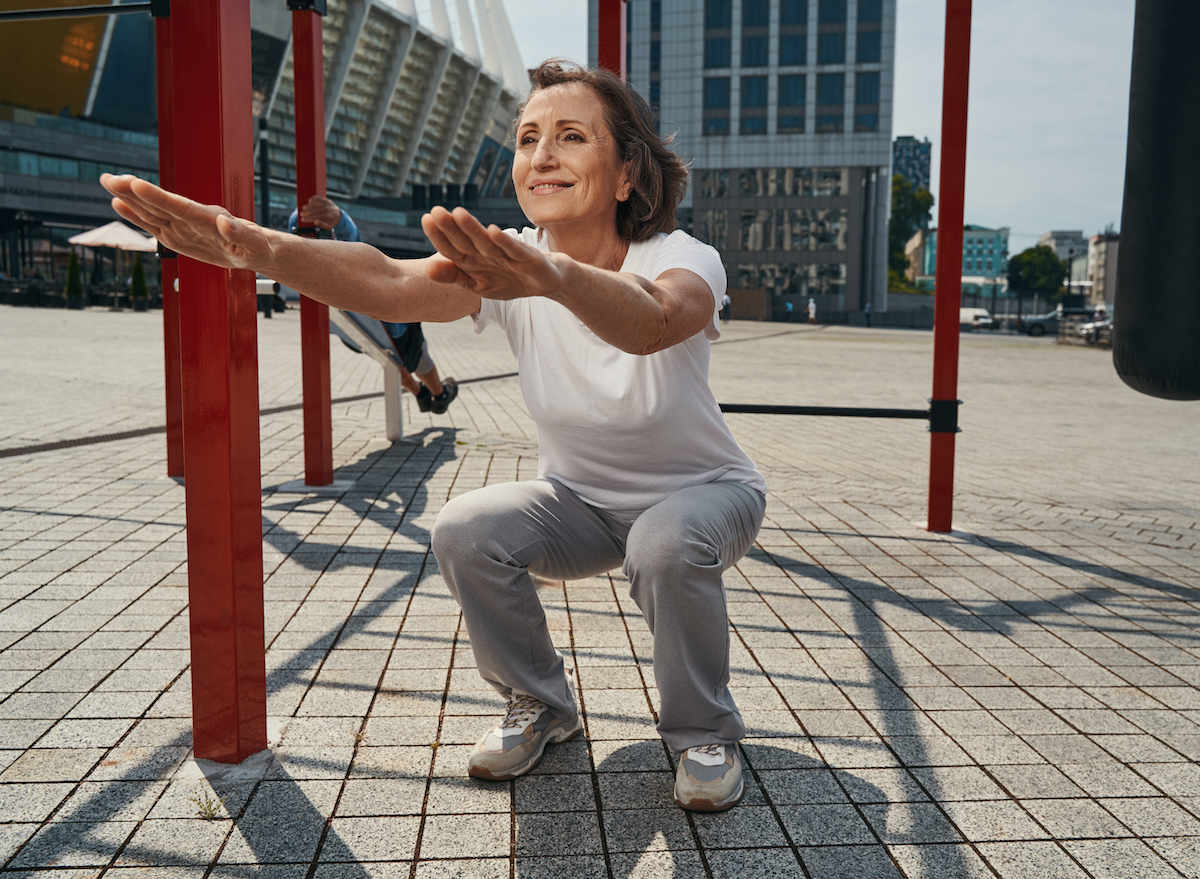
The present is a better time than any to show your lower body some much-needed TLC. This becomes increasingly true as you grow older, when your physical performance and muscle power gradually decline. This downward trend speeds up when you hit 65 if you're a female and 70 if you're a male, The National Institute on Aging reports. Taking action is the best course of attack, and we're here to help. We spoke with Katie Kollath, ACE CPT and co-founder of Barpath Fitness, who shares the best daily workout for lower-body strength as you age.
You may not think about it very much, but you depend on your lower-body strength for many crucial daily tasks. (After all, your legs do get you from one place to another!) The muscles in this part of your body serve as a solid foundation that can help enhance your posture and decrease your risk of injury. Having a strong, built-up lower body makes tasks like picking up heavier packages and grocery bags, walking, running, cycling, swimming, and even dancing much more seamless. According to Sunny Health & Fitness, making your lower body as strong and developed as it can be can also give your resting metabolism a solid boost so you torch a greater number of calories when resting.
So without further delay, we're here to walk you through Kollath's best daily workout for lower-body strength as you age. Read on to learn all about it, and for more fitness inspiration, check out 9 Strength Exercises You Need To Do Regularly in Your 50s To Stay Fit.
Why is resistance training so important?
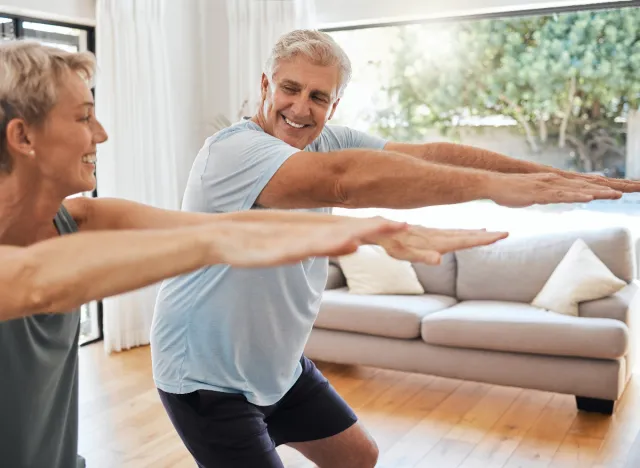
Resistance training—or strength training—is hands-down the most productive form of fitness you can focus on as you age. According to Kollath, "It will increase muscle mass and strength. As you age, there is a natural decline in muscle mass and strength, known as sarcopenia. Resistance training helps to counteract this age-related loss of muscle mass by stimulating muscle protein synthesis and promoting muscle growth. Building and maintaining muscle mass through resistance training can help improve overall physical performance, functional ability, and quality of life."
This form of training is a "weight-bearing exercise" that adds stress to your bones, which promotes bone growth and the ability to preserve bone density. Resistance training can also help you avoid osteoporosis, which is a common condition among older adults that involves the weakening of bones, making them more likely to suffer from fractures.
And we're not even close to being done yet! Resistance training can enhance your metabolic health, which in turn can help you avoid or get a handle on health conditions like metabolic syndrome, obesity, and type 2 diabetes. It can advance your joint stability and mobility by building up strength in the muscles surrounding those joints, improve your coordination, and give your mental health a nice little boost.
"Resistance training can [also] enhance functional fitness, which refers to the ability to perform daily activities and tasks with ease and independence," Kollath adds.
Now that you're aware of all the goodness that comes with resistance training, let's move into the daily workout for lower-body strength as you age.
1. Bodyweight Squats
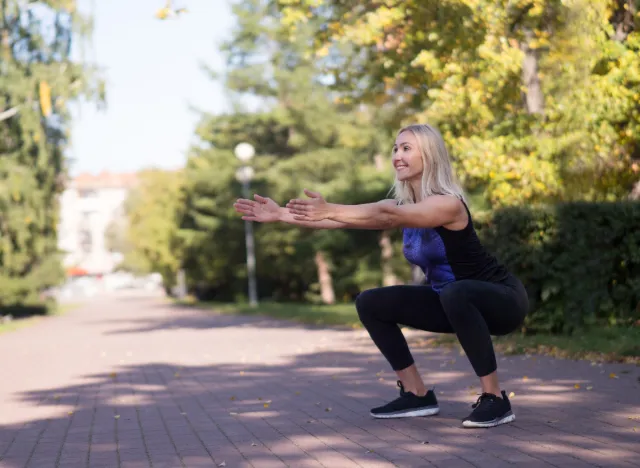
Using just your body weight is an extremely productive way to build up strength in the lower part of your body. This exercise will have you planting your feet either shoulder-width or hip-width distance apart. Hinge your hips back as you descend into a squat like you're sitting back in a chair. Your thighs should descend until they're parallel to the floor or lower. Press through both feet in order to come back up to the standing position. Complete two to three sets of 10 to 20 reps.
2. Lunges
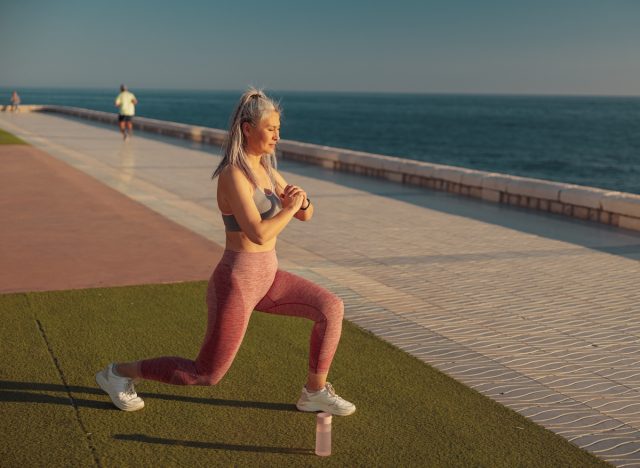
For lunges, you will keep your core activated and your upper body straight during the movement to promote solid form and stability. Keep your front knee lined up with your ankle, and don't allow it to cave in. Make sure your weight is distributed evenly between the front and back foot, and don't lean too far to the front or back while lunging. Once you descend into a lunge, activate the muscles in your legs and glutes to press through your heel in order to rise back up to the position you started in. Complete two to three sets of 10 to 20 reps for each side.
3. Single-Leg Toe Touch
To perform this next exercise, Kollath recommends starting with a shorter range of motion, and slowly working your way up to touch your toes as both your balance and flexibility improve. "Keep your core engaged and your back straight throughout the movement to maintain good form and stability. Use a slow and controlled movement pattern to focus on balance and stability, rather than speed. Use a focal point to help with balance, such as looking at a spot on the ground in front of you," she adds. Complete two to three sets of 10 reps per side.
If you're a newbie to the single-leg toe touch, or you're worried about balance, feel free to do this move next to a stable surface like a chair or a wall. You can lightly touch it for added support.
4. Glute Bridges
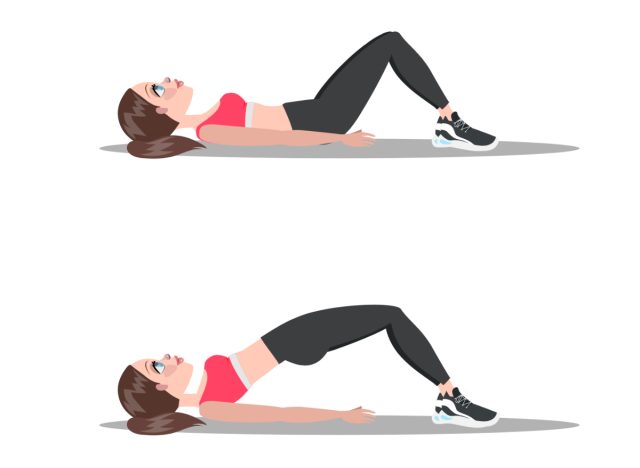
This final exercise calls for you to lie on your back on a workout mat. Keep your arms by your sides, and bend both knees. Press your hips up toward the sky before using control to lower them back down to the floor.
"To perform the glute bridge, keep your feet flat on the ground throughout the movement, and distribute the pressure evenly across your feet," Kollath instructs. "Avoid pushing through your toes or allowing your knees to collapse inward. Keep your knees in line with your feet. Engage your glutes and hamstrings to lift your hips, rather than relying solely on your lower back. Maintain a neutral spine position by avoiding excessive arching or rounding of your lower back. Focus on squeezing your glutes at the top of the movement to maximize the activation of your glute muscles." Complete two to three sets of 10 to 20 reps.









